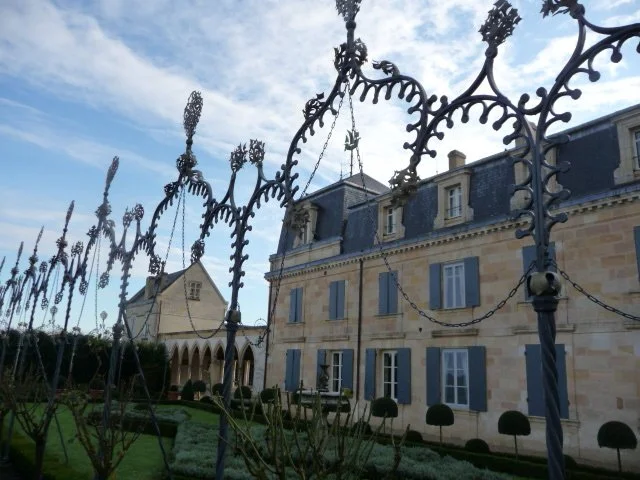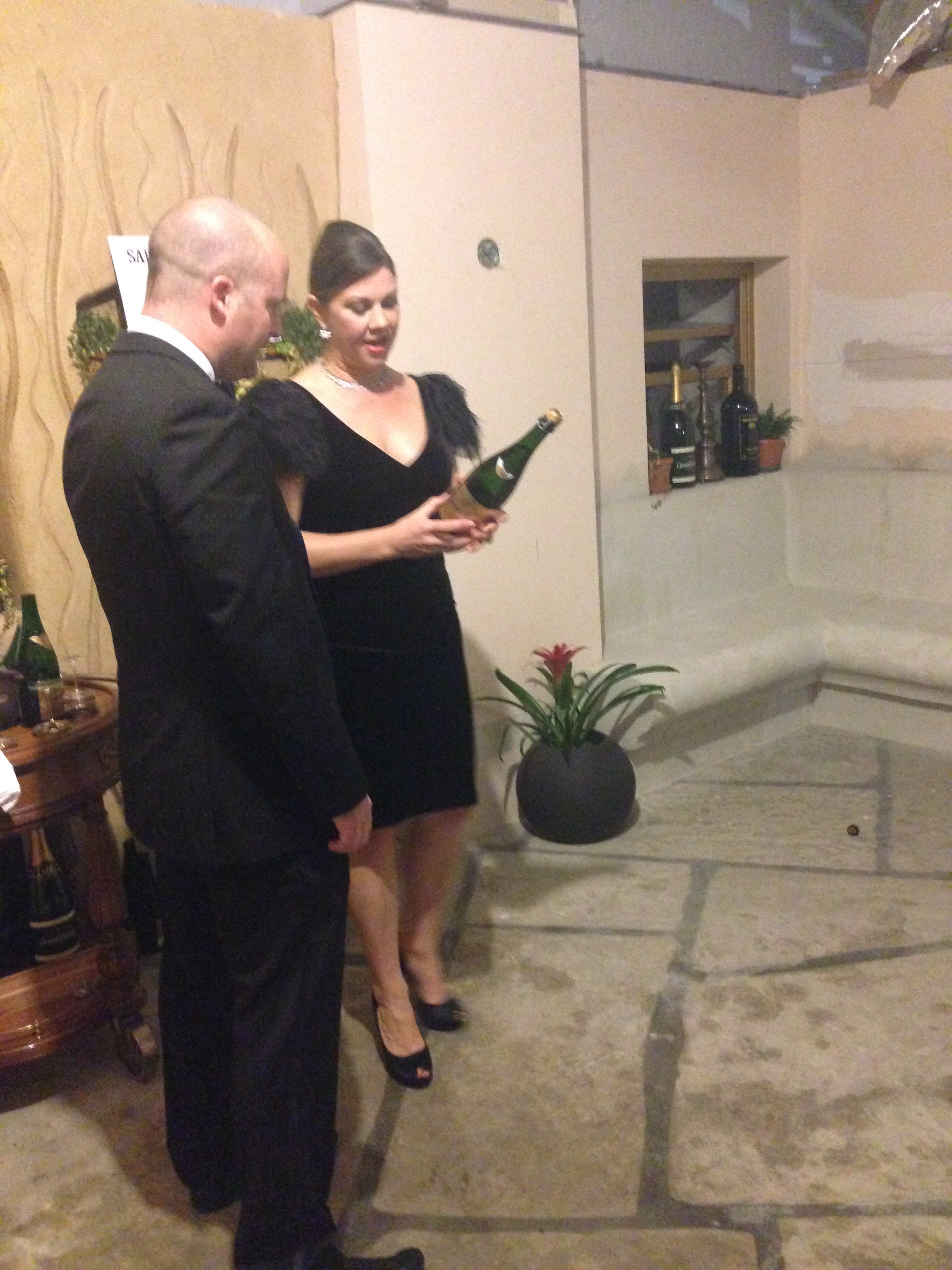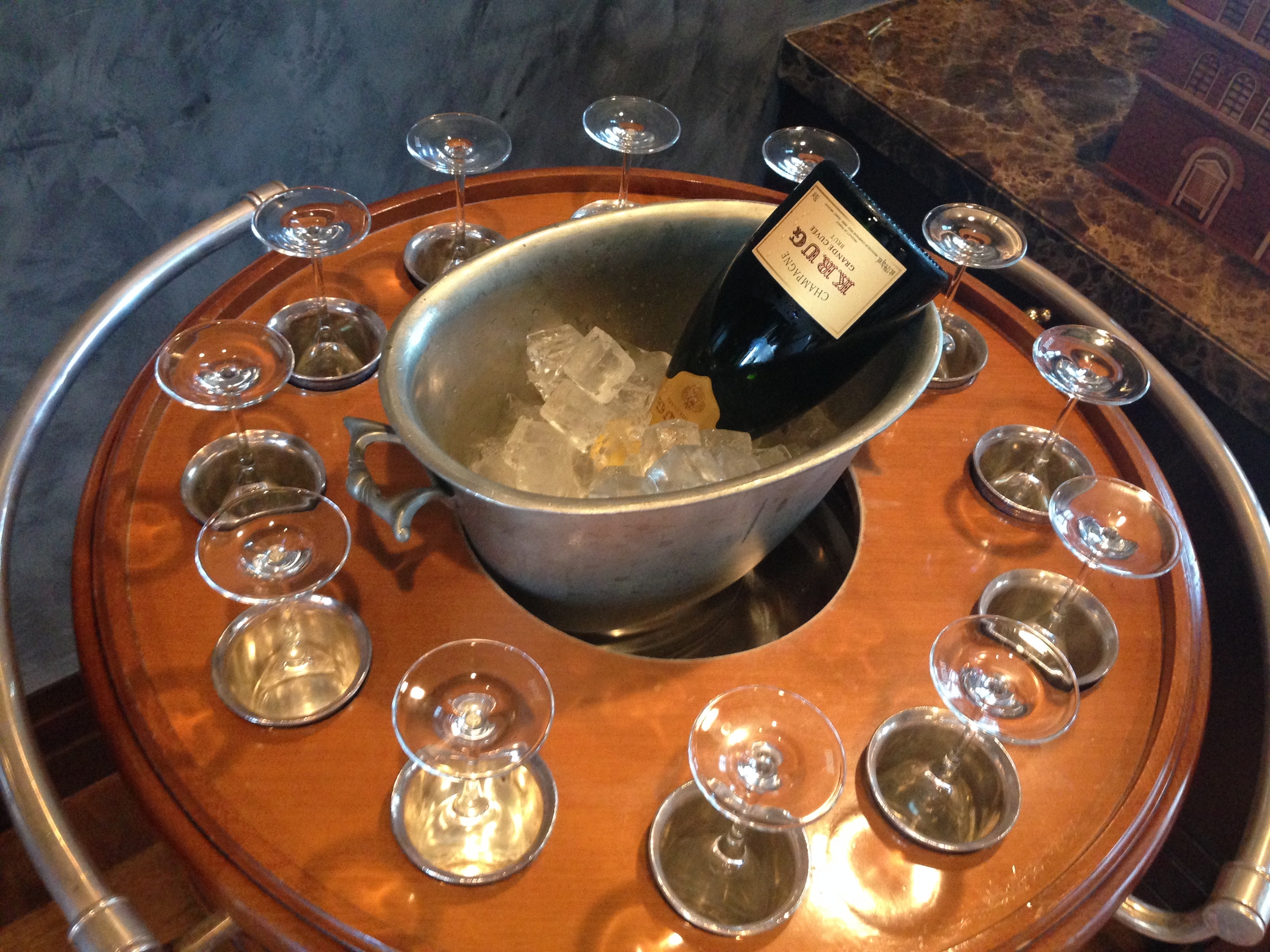With the holidays literally upon us, many of us are rushing out to pick up a bottle or four of our favorite bubbles with which to celebrate the season. Many of these bottles will be consumed with family and friends, in small intimate gatherings or large parties on rooftops overlooking city skylines, decks looking out onto forests blanketed in snow, or on beaches stretching out towards the Pacific (if we’re lucky). So if there was ever an opportunity to open a bottle of Champagne in the most dramatic fashion, this is the time. It’s time to saber!
The first bottle that I sabered was a magnum of Nicolas Feuillatte on my 33rd birthday. I was petrified. I had a very heavy, very cold, very wet and very expensive bottle of bubbles trembling in my left hand and in my right I had a large knife. A lot of things could have gone wrong here. And although it took me a few tries to pop that top off the bottle, once I was successful I knew I never wanted to open Champagne the boring way again.
Since that time, I’ve sabered hundreds of bottles, and have taught many people along the way the proper way to saber a bottle of Champagne. As Champagne Director for the Bubble Lounge in San Francisco, I had the opportunity to be taught the proper way by a member of the Confrérie du Sabre d’Or, an organization based in London that resurrected this grand gesture of celebratory punctuation as an ode to the long, lost tradition of sabrage, said to have been brought into vogue with Napoleon in the 1800’s.
It was Napoleon who was quoted as saying “Champagne! In victory one deserves it, and in defeat, one needs it.” At the beginning of the Napoleonic Period (1799-1815), Napoleon and his French cavalry routinely travelled victoriously through the villages of France after winning battles following the Coup d’Etat in 1799. They would often travel through the village of Reims in Champagne, where Mme. Cliquot (a.k.a. the Widow Clicquot, or Veuve Clicquot) would offer up bottles of her Champagne to honor the victors. Mounted on their horses and not wanting to mess with removing the cage and popping the cork in usual fashion, Napoleon and his men would take their sabers from their sheaths, and run it along the seam of the chilled Champagne bottle, popping both the lip and the cork off in one grand swoop. Glasses would be offered up to the soldiers and they would drink to victory atop their horses, from the severed neck of local Champagne. There are stories that he did this to impress the women of the village as well.
To imitate this grand gesture, both safely and with the panache of Napoleon, there are a few things to remember and ensure. The idea of sabrage is actually more about physics than force. Each bottle has a seam running up alongside the bottle that meets just under the lip of the bottle, where the bottle has been molded. Where the the seam meets the lip, known as the annulus, this is the weakest point of the bottle, and is your contact point. The colder the neck of the bottle, the easier it will be to pop the top off the bottle, glass ring and cork in tact. The movement is smooth and quick, with a follow through that is similar to a tennis backswing. I always say - it’s all about form and finesse, not about force! Once you’re comfortable, it is possible to saber with the base of a Champagne flute - definitely no brute force or sharp blade needed there.
One bit of advice - wines that are bottled in top quality glass are the only bottles of bubbly I would suggest sabering. True Champagne, and some domestic sparkling wines like Schramsberg, have thick, quality glass that won’t fraction or weaken like some cava, prosecco and low-quality glass. In the beginning, sabering a bottle free of any embossment, and one that has a traditional shape will be easier. Champagnes like Billecart-Salmon and Ruinart are difficult to saber cleanly when you’re starting out because of their significantly sloping shoulders. I also recommend taking all of the foil and cage to make it easier to slide the saber up the side of the bottle and make contact with annulus.
And of course - a bottle of Champagne is like a loaded pistol, with over 100 psi under the cork - so always point the neck and cork of the bottle away from people, glass, pets and expensive vases!
Below are some general steps to sabering a bottle of champagne.*
Ensure the bottle is properly chilled, which is slightly colder than typical serving temperature, about 37°. Keeping the bottle in the refrigerator for an hour before planning to saber will get it chilled properly, or placing the bottle in an ice bath with rock salt and water for 20 minutes, then placing it neck-down for the last 10 minutes to get a proper chill on the neck. A cold bottle will not release the cork early and will minimize the spray of Champagne once sabered.
Find one of the two seams running lengthwise alongside the bottle. This seam will mark your path to the annulus, which is your contact point.
With the bottle in your less-dominant hand, hold at arm’s length, with your thumb in the punt and a firm grip on the base. The bottle will be wet, so keep a napkin or serviette nearby to ensure you have a secure handle on the bottle. Point the neck of the bottle up about 30° from horizontal, and away from people, objects and anything you don’t want to hit. About a 10-15ft. radius should be sufficient.
Hold the saber in your dominant hand, with the dull side of the knife or saber facing the neck of the bottle. There are some sabers by Laguiole that are designed for sabrage, and so both sides of the saber are blunt. Lay the saber along the seam of the bottle, lined up in the middle so the saber forms a “T” with the bottle. Keep the saber flush and flat on the bottle, with just a slight lift in your wrist.
Slide the saber up the seam of the bottle, keeping your wrist firm with a fluid motion of the arm. Warm up the seam of the bottle with the saber two or three times- therefore causing a bit of friction and allowing a greater thermodynamic pressure release. Aim at the point where the seam meets the annulus.
With a quick, fluid motion, hit the weak point of the annulus with the saber and follow through. The cork along with with the annulus should separate easily from the neck, which makes for a great souvenir.
Pour into waiting glasses, knowing that the 100 psi of pressure inside the bottle will push out any fragments if it was a clean saber. If the bottle cracks, breaks or otherwise explodes, DO NOT serve the Champagne, as it may be compromised.
Be very careful handling the bottle as the top of the bottle after sabrage is EXTREMELY SHARP and can slice you very easily. Always handle with the punt after sabering, and with a serviette. I always put a serviette over the top of the bottle when putting it into a bucket that others may grab at any time to warn them of the sharp glass.
Pose for pictures of your sabered bottle, weapon of choice, and a glass of Champagne!
All this excitement for Champagne... Decadent bubbles! Weapons! Possible bloodshed! But above all, if you demonstrate safety and respect for the craft of sabrage, you’ll be the toast of the party with a perfectly sabered bottle of bubbly.
Salute!
*DISCLAIMER: The above are guidelines and you should be trained by a Maitre d’Sabrage before attempting, or perform the sabrage in the presence of a Maitre d’Sabrage. Christina Sports and Abaluche Wine Company do not claim any responsibility for any sabrage action taken as a result of this posting.






